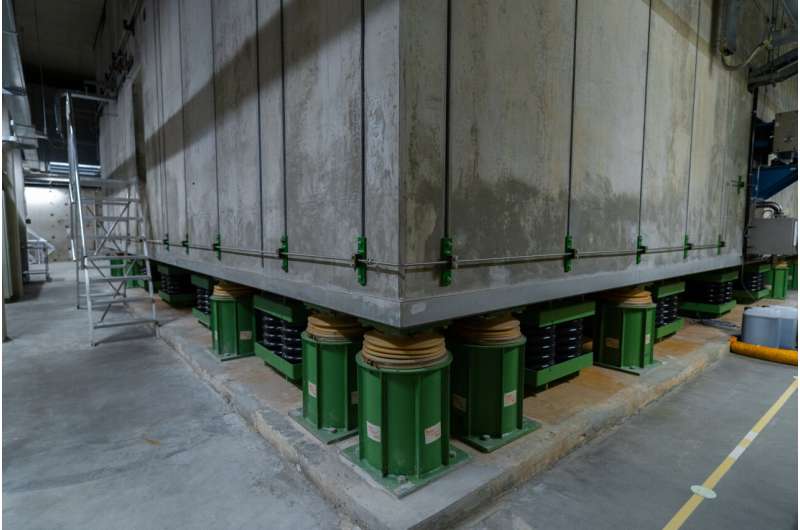This article has been reviewed according to Science X's editorial process and policies. Editors have highlighted the following attributes while ensuring the content's credibility:
fact-checked
trusted source
proofread
Hydra shaker table simulates the vibration forces of a rocket launch for satellite testing

As the earthquake-strength Hydra shaker table simulates the vibration forces of a rocket launch for satellite testing, it is only this concrete block and the dampeners and springs supporting it that prevent the rest of the European Space Agency's ESTEC Test Center from also suffering the shakes.
The most powerful and precisely controllable of the shaker tables the ESA uses for satellite testing at its Test Center in Noordwijk, the Netherlands, is the multi-axis Hydra, which is capable of vibrating test items weighing many tons.
Seen from the cleanroom above, the hydraulically-powered Hydra appears to be simply a 5.5 x 5.5 m aluminum platform lying flush with the floor. But this plate is only the top of an 18 metric ton test table which is moveable using eight hydraulic actuators, in the same manner as a flight simulator machine.
This test table is enclosed within a 1,400 metric ton concrete 'seismic foundation' block. This block rests in turn on the set of springs and dampers, which isolate it, preventing potentially damaging vibrations from spreading through the rest of the building.
Provided by European Space Agency





















